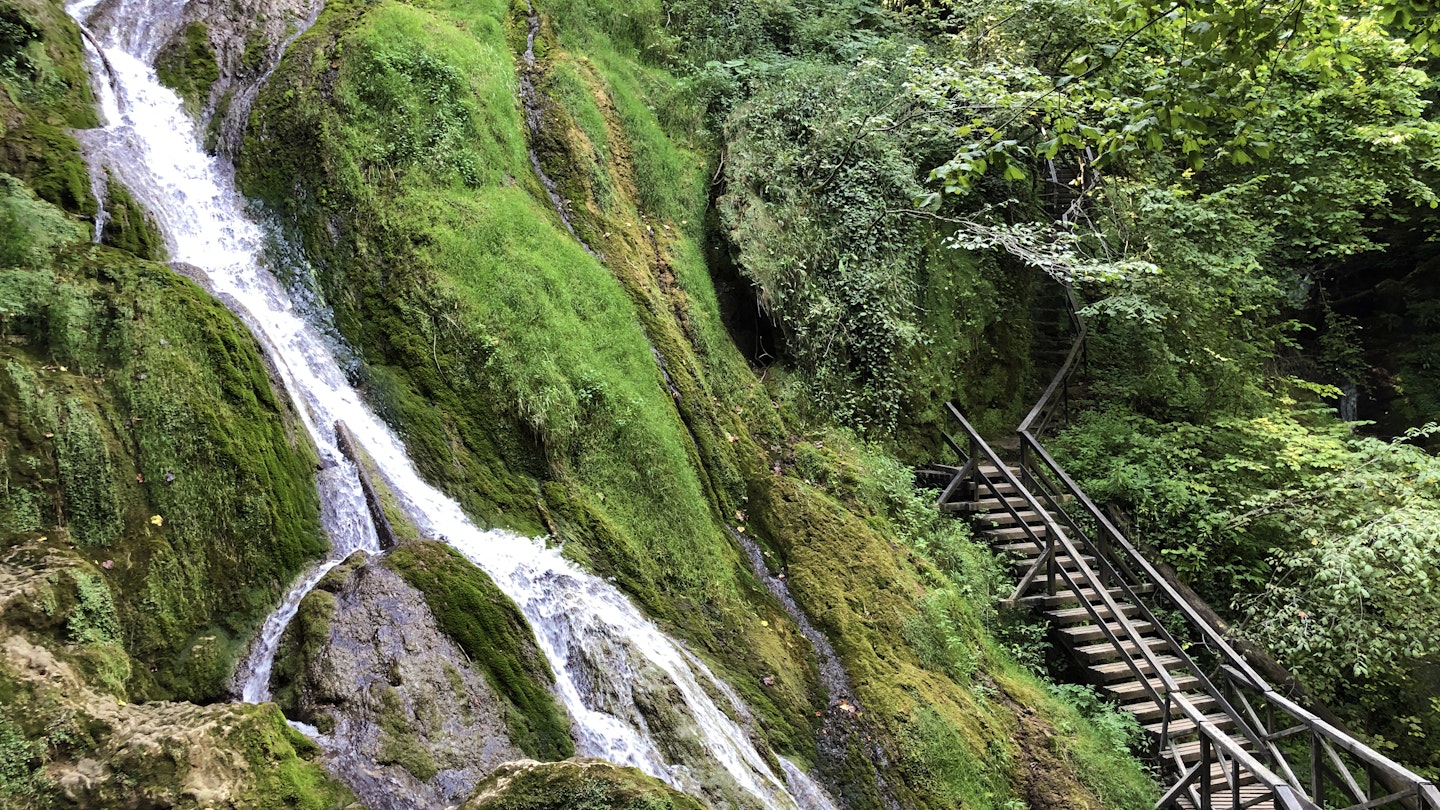Discover Croatia’s Stunning Nature Parks
Croatia is not solely defined by its picturesque coastline and islands; it is also home to eight national parks and 12 nature parks that showcase the country’s diverse biodiversity. Wandering into Croatia’s interior, nature enthusiasts and adventure seekers will encounter remarkable mountain trails, majestic limestone peaks, lush forests, rumbling waterfalls, and rich biodiversity.
Velebit Nature Park
The jagged limestone peaks of the Velebit mountain chain are one of the most stunning features of Croatia’s landscape. This range stretches nearly 93 miles alongside the Adriatic coastline, creating a natural barrier to the interior. With a width of 19 miles at its broadest point, Velebit is Croatia’s largest mountain range and is fully protected as a nature park.

The Velebit mountain trail runs the length of this magnificent chain, starting in the Northern Velebit National Park and concluding in Paklenica National Park. Adventurous hikers can tackle this 62-mile journey in nine days. For those seeking a shorter experience, scenic routes include the trek from Zavižan to Alan, which lasts around six hours, or the stretch through Paklenica National Park.
Moreover, the Velebit Botanical Garden provides visitors an opportunity to witness unique flora at a high altitude of 4855 feet. During the summer, hikers can explore this garden’s 300 plant species, including the rare alpine Edelweiss flower.
Dinara Nature Park
For those keen to conquer Croatia’s highest peak, Dinara is the destination of choice, with its summit reaching 6007 feet. Nestled along the border with Bosnia, the mountain provides captivating views over the surrounding valleys.

Designated as a nature park in February 2021, Dinara spans over 155,000 acres and is rich in diverse ecosystems, featuring forests, grasslands, riverbeds, caves, and waterfalls. The park is also home to 20 endemic animal species and boasts over 1000 unique plant species.
Furthermore, the Via Dinarica trail winds through this beautiful landscape, connecting seven countries along the Dinaric Alps—making it an extensive route for hiking enthusiasts.
Biokovo Nature Park and the Biokovo Skywalk
Next, journey to Croatia’s second-highest mountain range, Biokovo, which rises dramatically above the Makarska Riviera. The park features breathtaking views from its highest peak, Sveti Jure, which stands at 5780 feet, offering panoramic vistas of the Dalmatian coast and nearby islands such as Hvar and Brač.

Access to the peak is facilitated by a seven-mile-long road, allowing visitors to reach the summit with ease. However, those who prefer a physically engaging experience can take the challenging route from the mountain hut at Vošac, comprising a four-hour ascent to the summit.
In addition, the Biokovo Nature Park now features the Biokovo Skywalk, a breathtaking semi-circular walkway that extends 36 feet out over the cliff edge. Standing on this glass-bottom walkway at a height of 4028 feet offers a thrilling viewpoint of the stunning coastal landscape.
Lonjsko Polje Nature Park
Reviving the adventure spirit, Lonjsko Polje Nature Park in central Croatia encompasses 195 square miles of expansive wetlands, making it the largest swamp in Europe. This remarkable park is home to over 200 bird species, thus attracting numerous birdwatching enthusiasts each year.

Visitors should commence their adventure in Čigoć, where the information center is situated. In spring and summer, you may spot great white storks nesting on rooftops throughout the village, as they inhabit the area until late summer before migrating to Africa.
As you explore the park, you can follow wooden walkways through the swamps and see educational signage showcasing insights into local wildlife. Alternatively, renting a canoe allows for intimate encounters with the park’s diverse birdlife as you navigate the serene canals.
Concluding your visit, you can discover the charming historical village of Krapje, famous for its well-preserved traditional wooden houses featuring pillared porches and steep roofs, some of which have been transformed into guesthouses and eateries offering delicious local cuisine.
Papuk Nature Park
If you’re seeking to immerse yourself in nature, head to Papuk Nature Park situated about 9.5 miles north of Požega. The park features ancient beech and oak forests, alongside well-marked trails leading through tranquil landscapes adorned with streams, caves, and waterfalls.

This park is esteemed as a UNESCO Geopark due to its significant geological formations dating back 600 million years. The Count’s Educational Trail runs through Jankovac Forest Park, leading to Skakavac, a beautiful 115-foot waterfall nestled deep within the woods.
Papuk Nature Park is a biodiversity hotspot, hosting over 1200 species of flora and fauna. Keep your eyes peeled for wild orchids, yellow irises, and the endangered aquatic plant Hippuris vulgaris. Birdwatching here also offers chances to spot stock doves, collared flycatchers, goldcrests, and firecrests flourishing within the park.
With these natural wonders, Croatia showcases a spectrum of outdoor adventures and experiences in its stunning landscapes. Visitors to these nature parks can effortlessly embrace the beauty of Croatia’s rich wilderness and unparalleled biodiversity.





